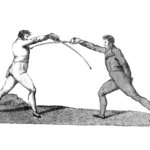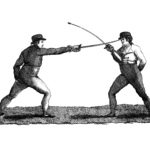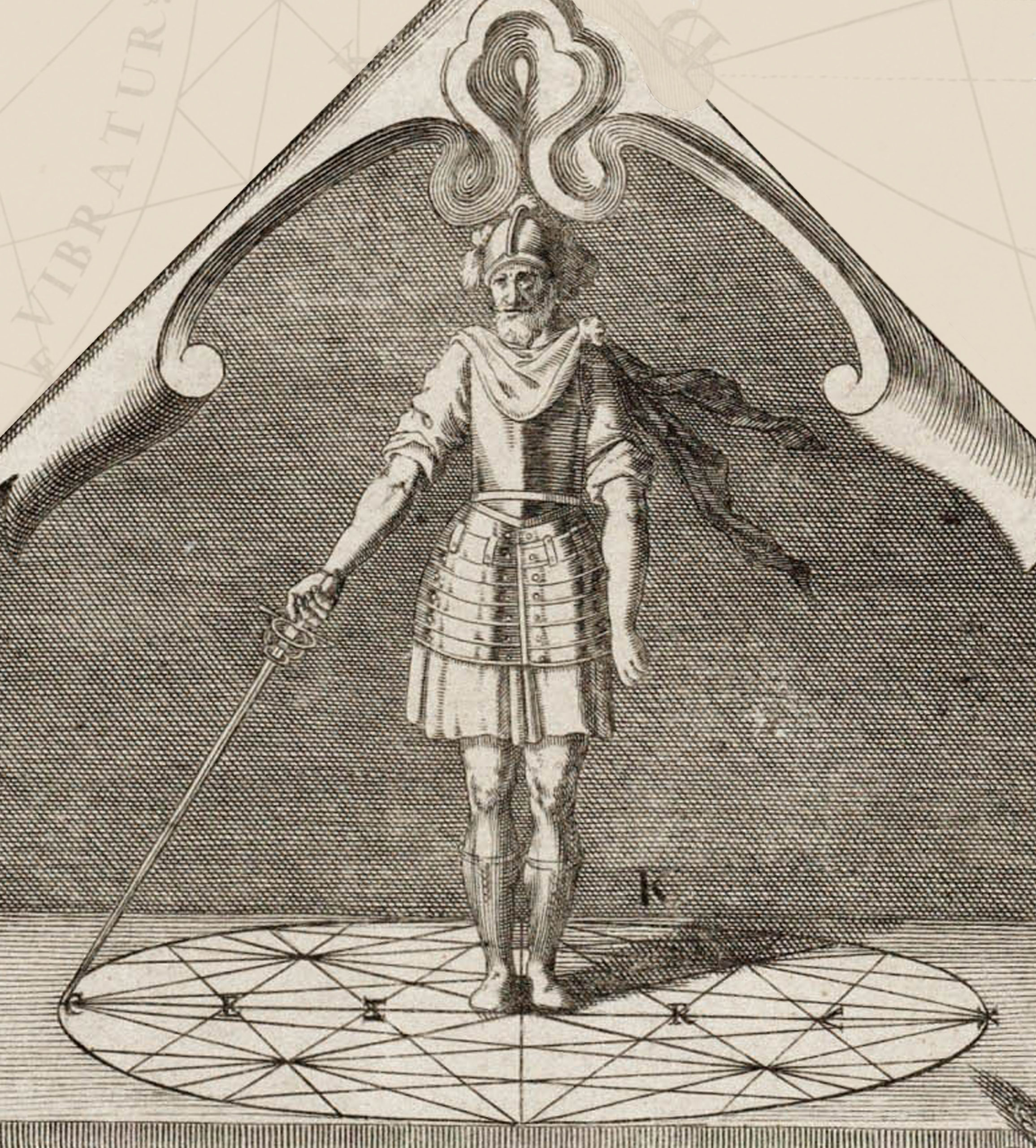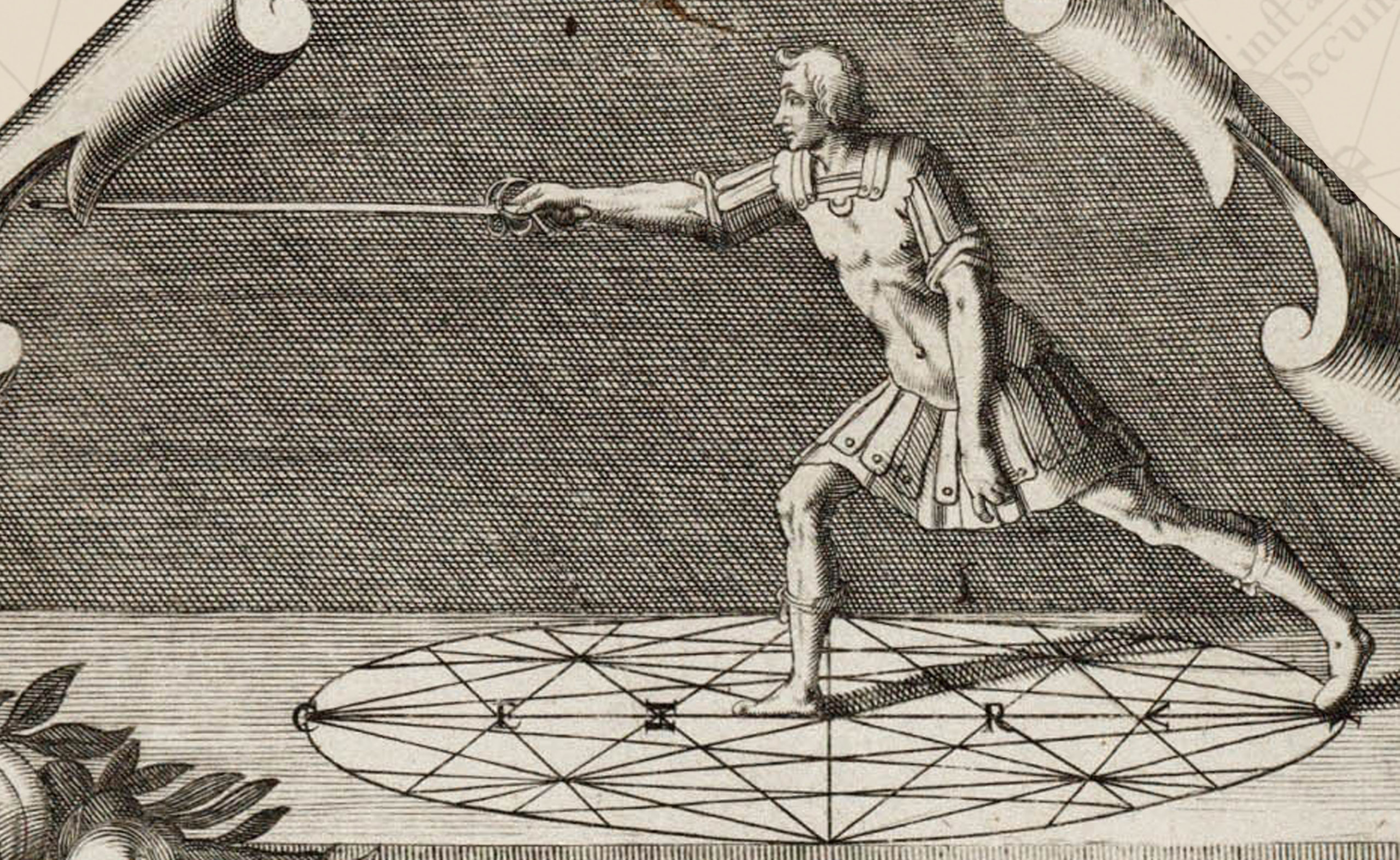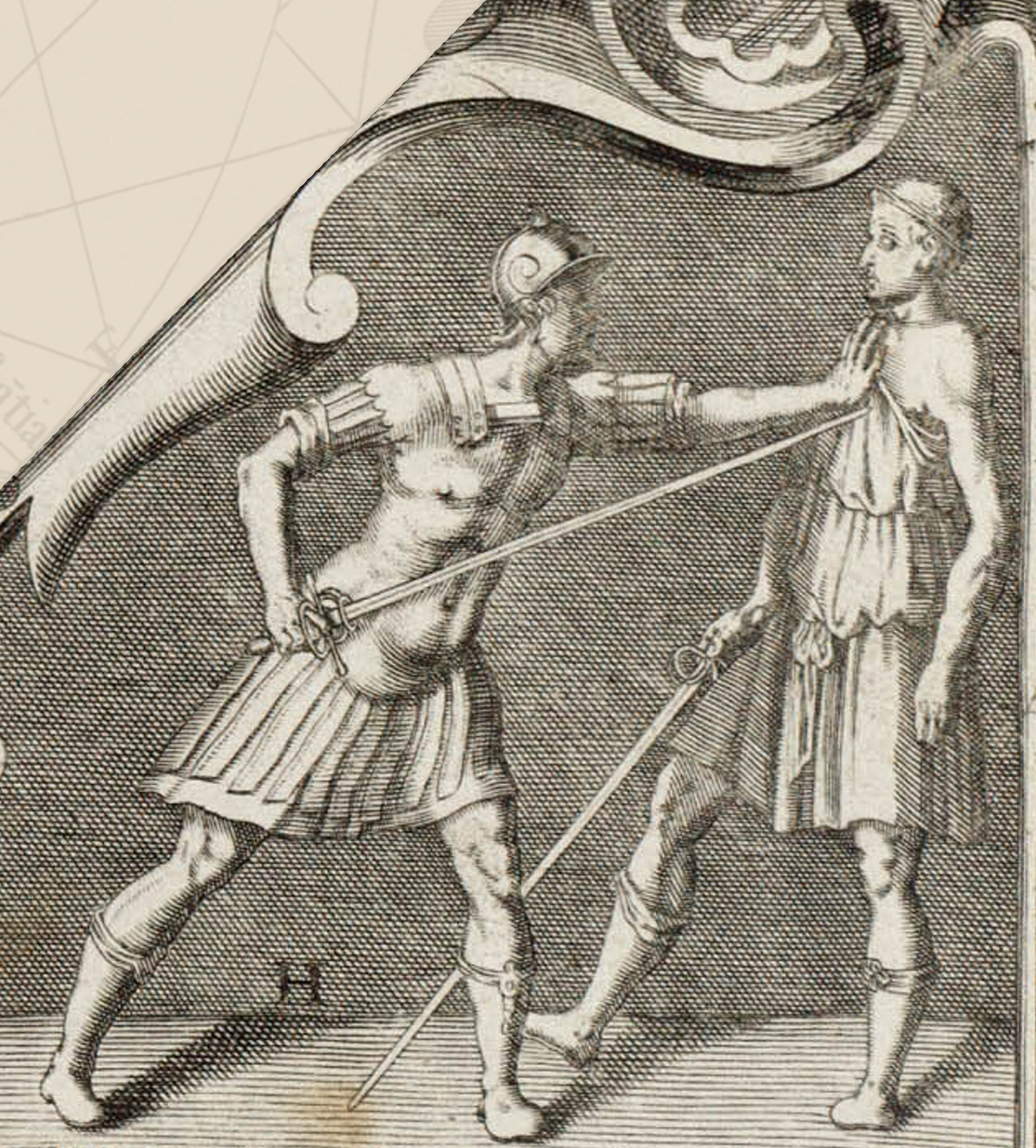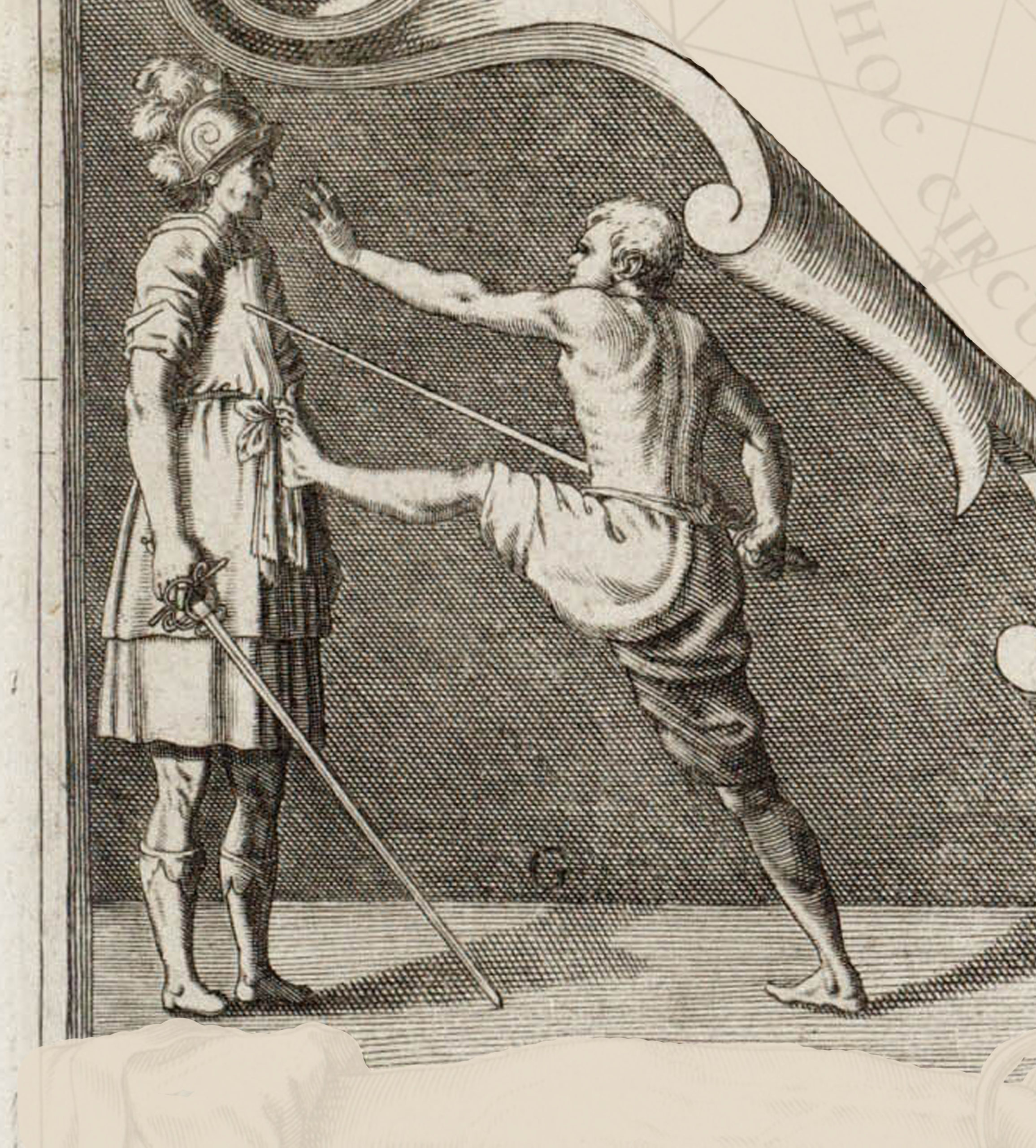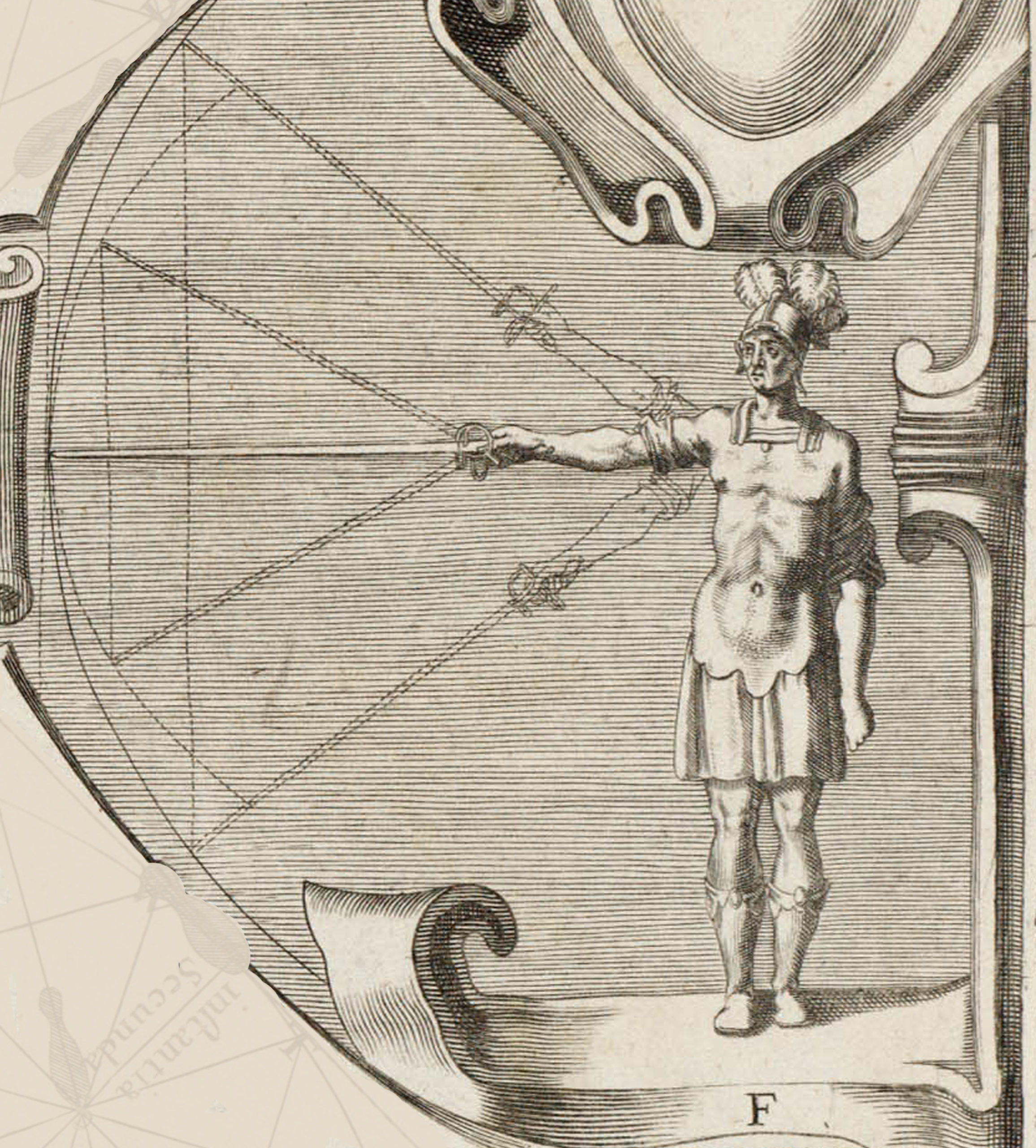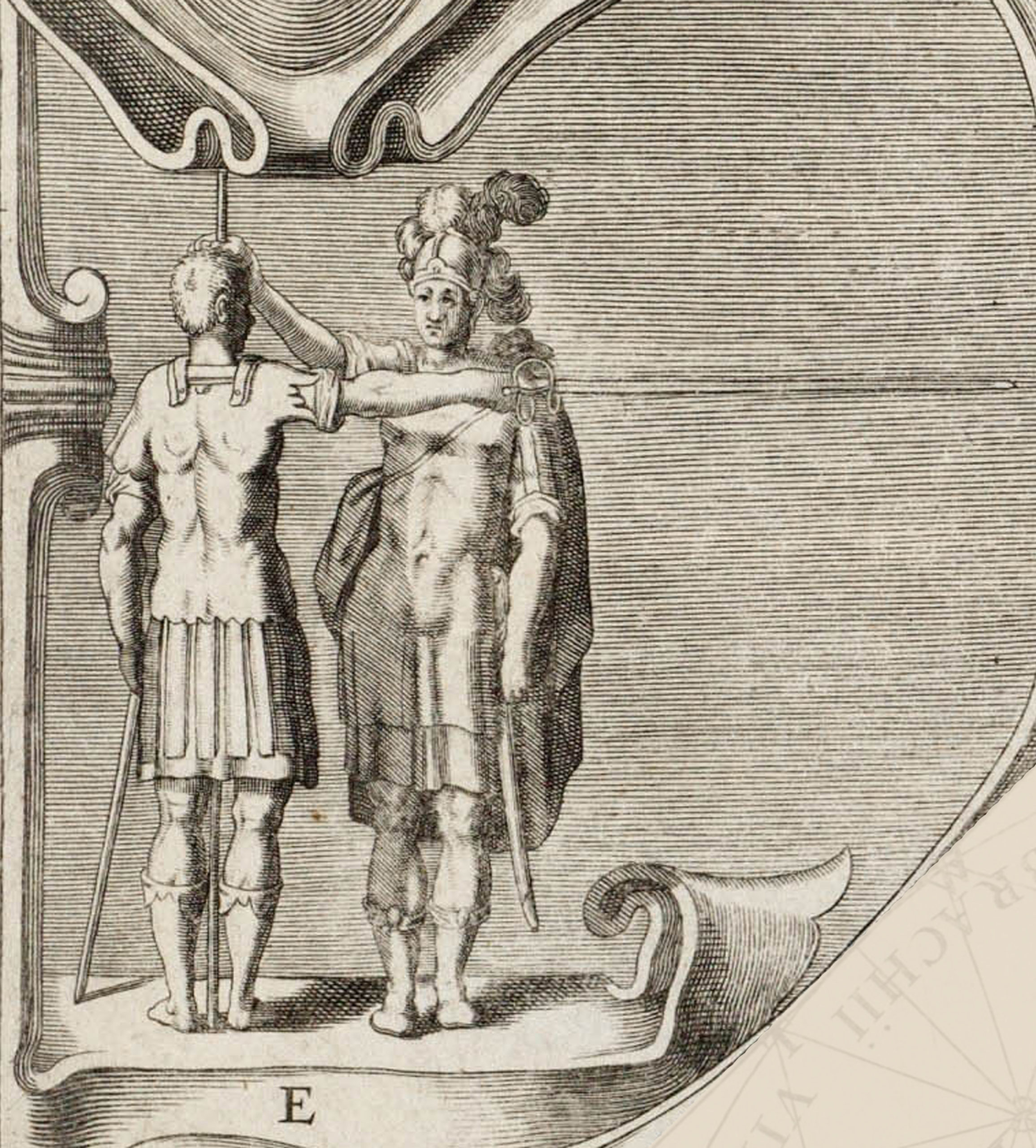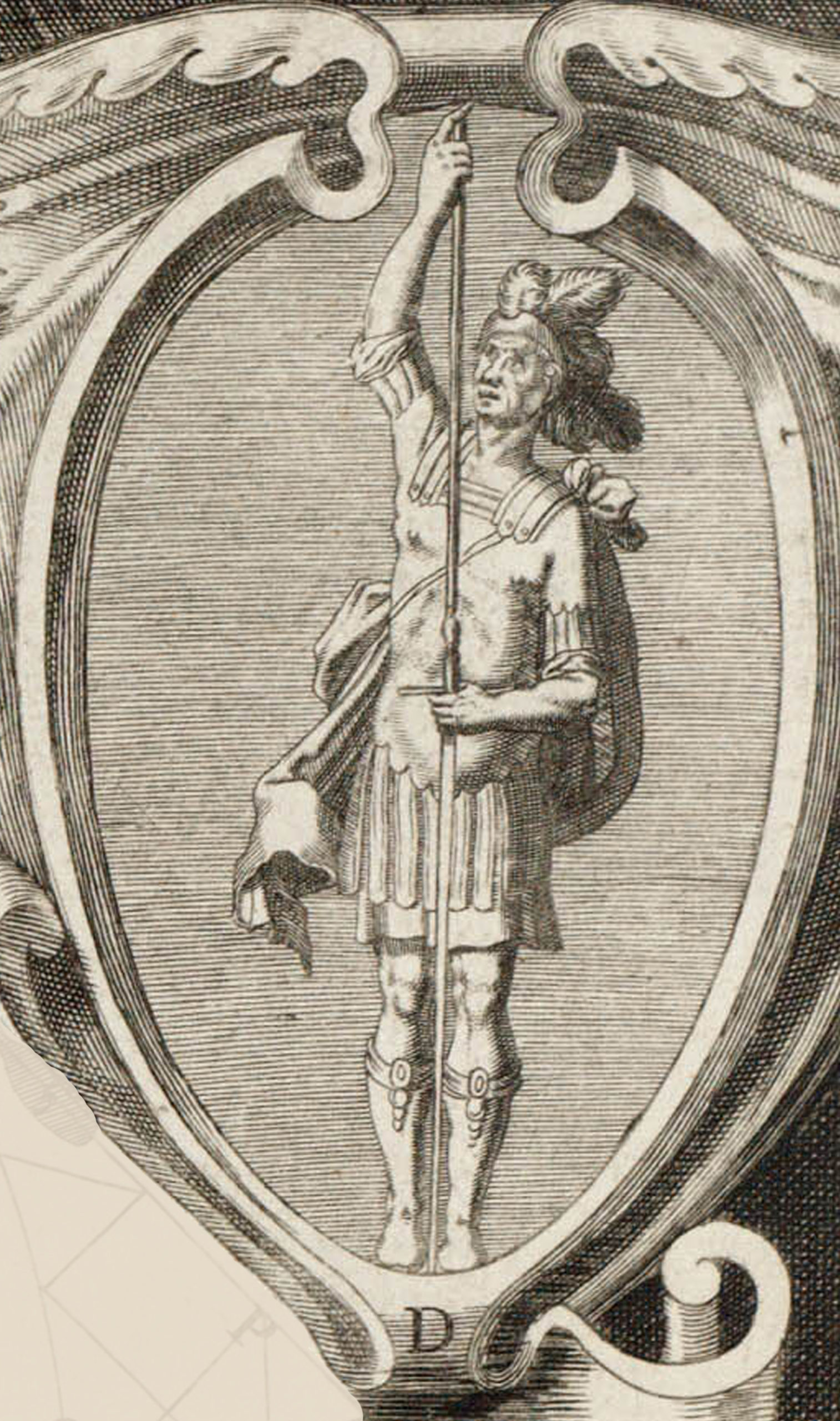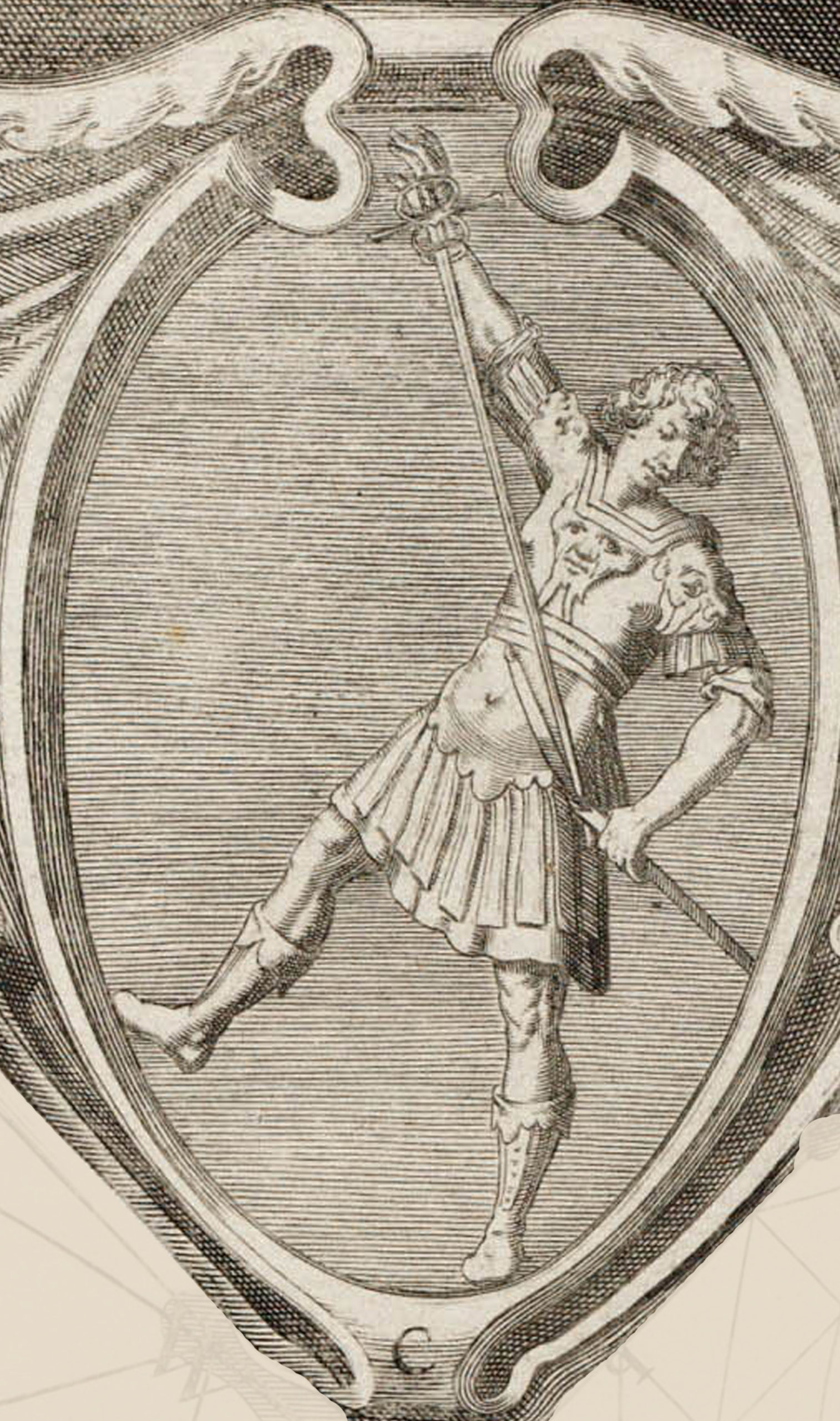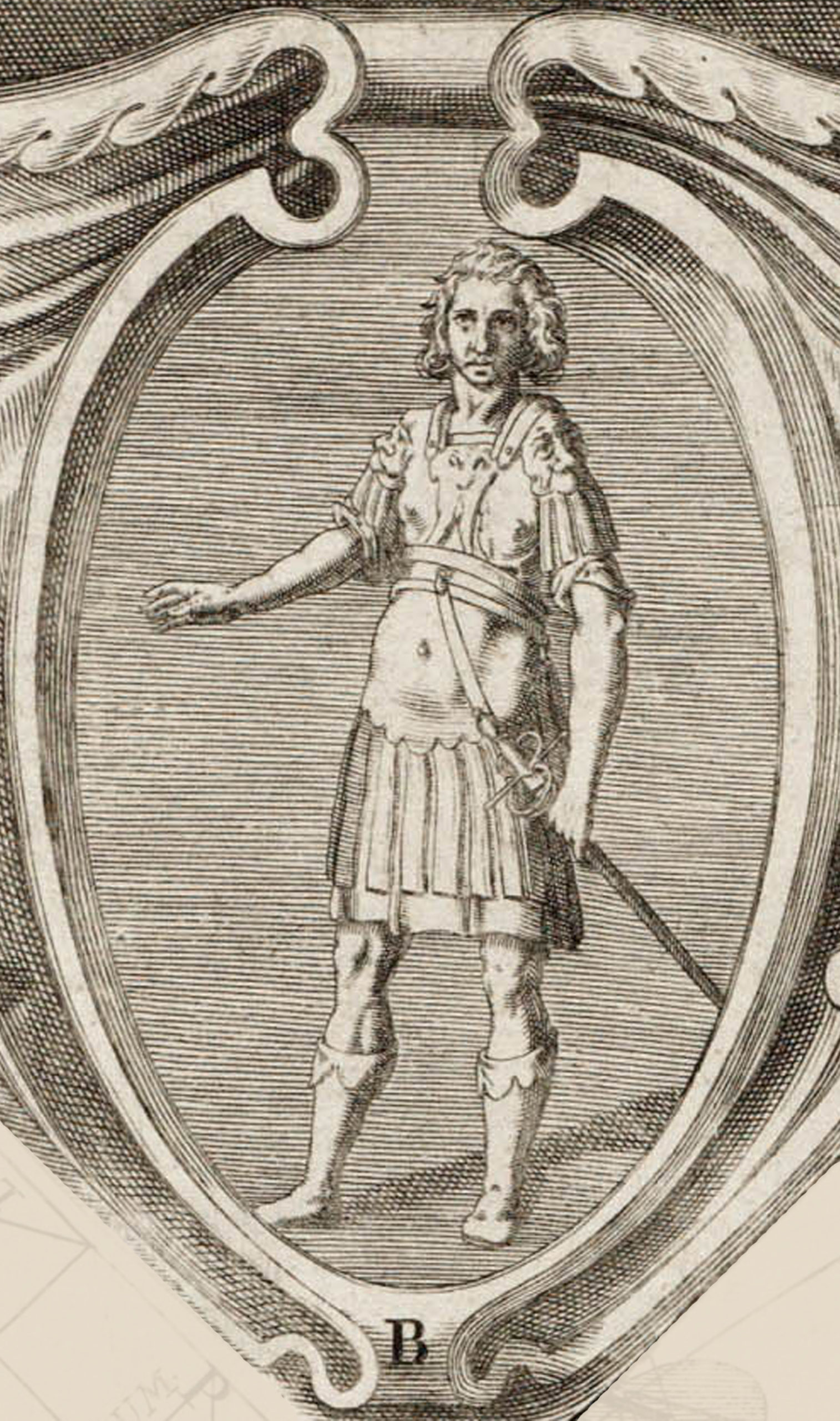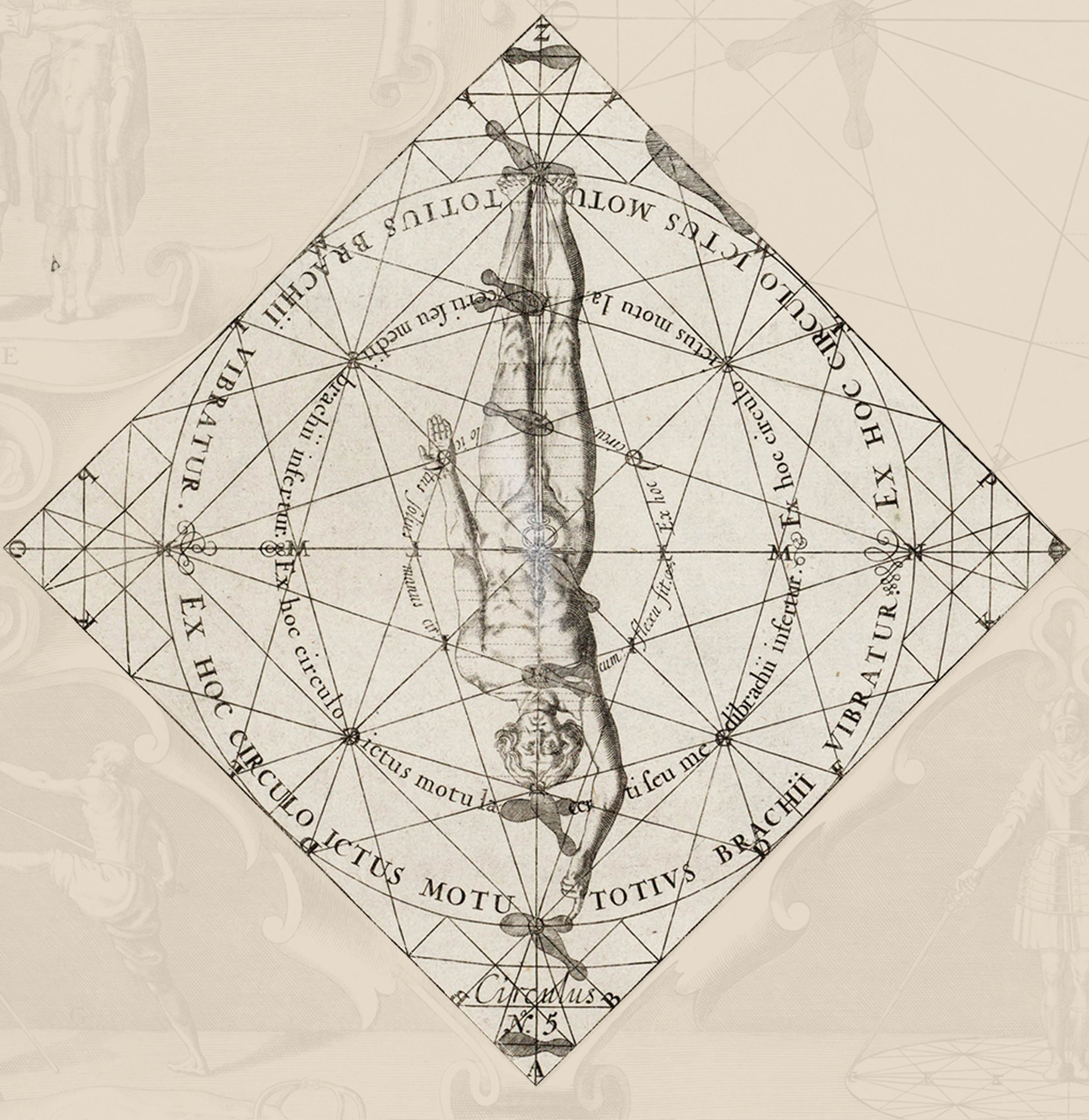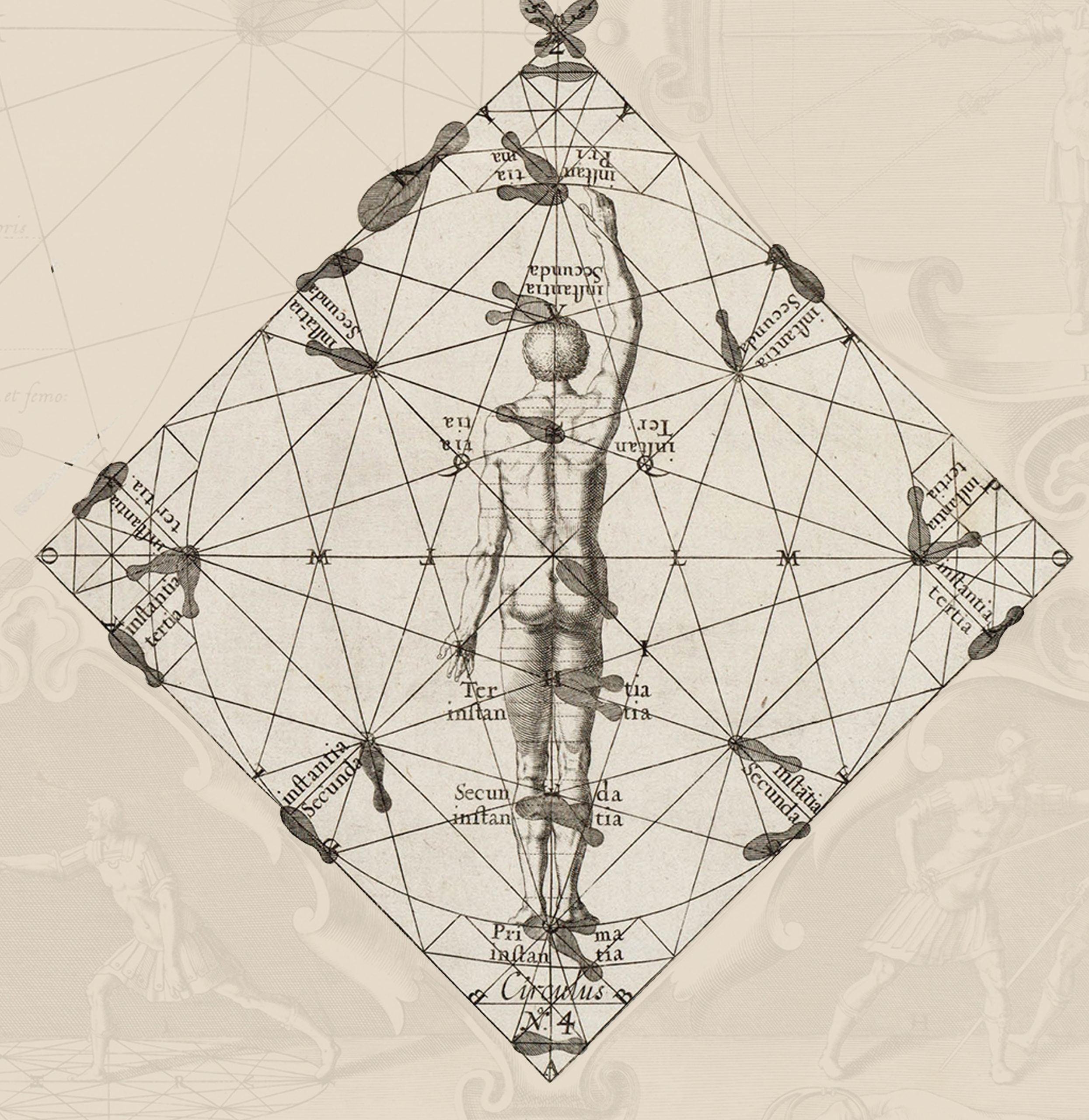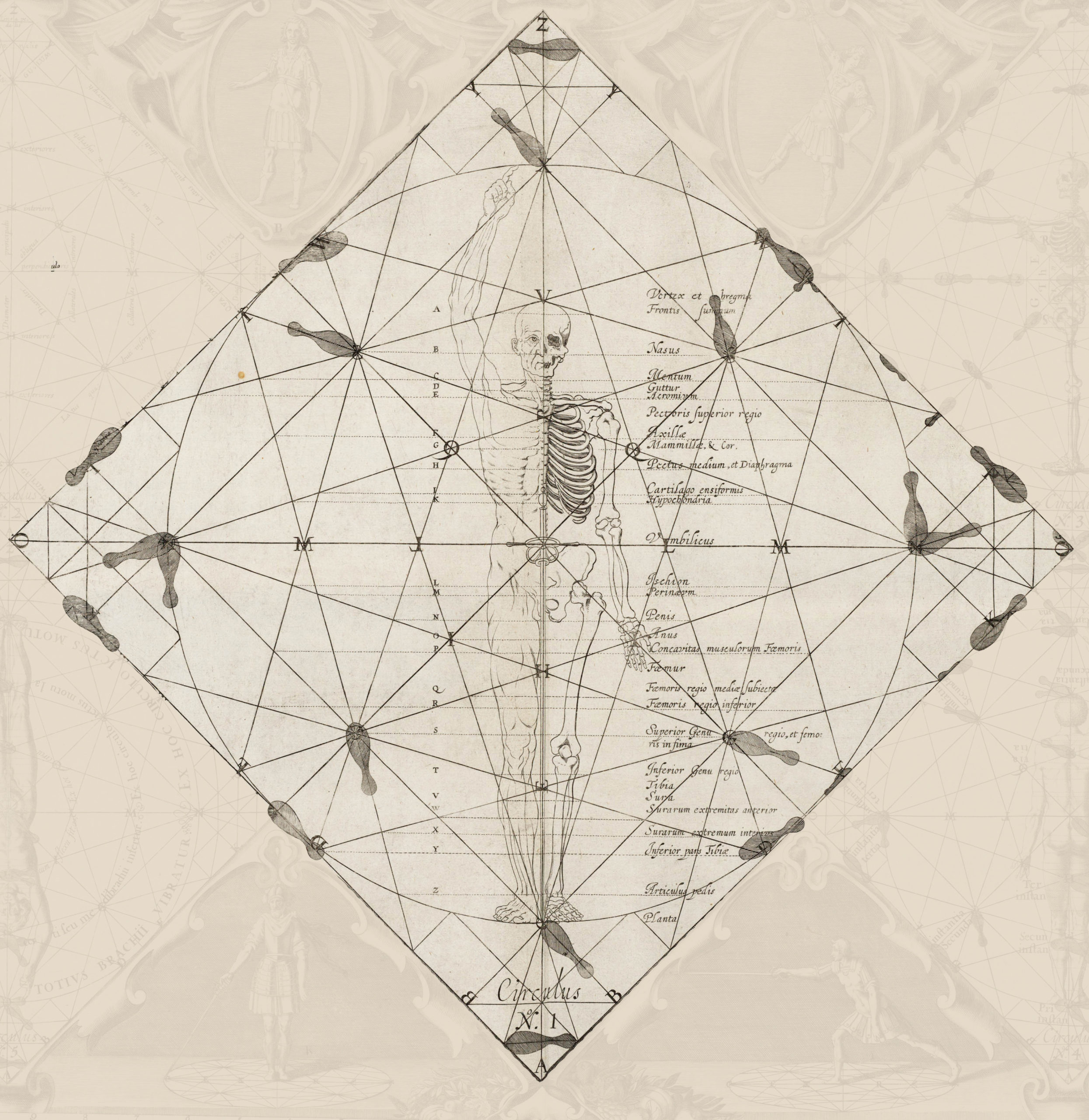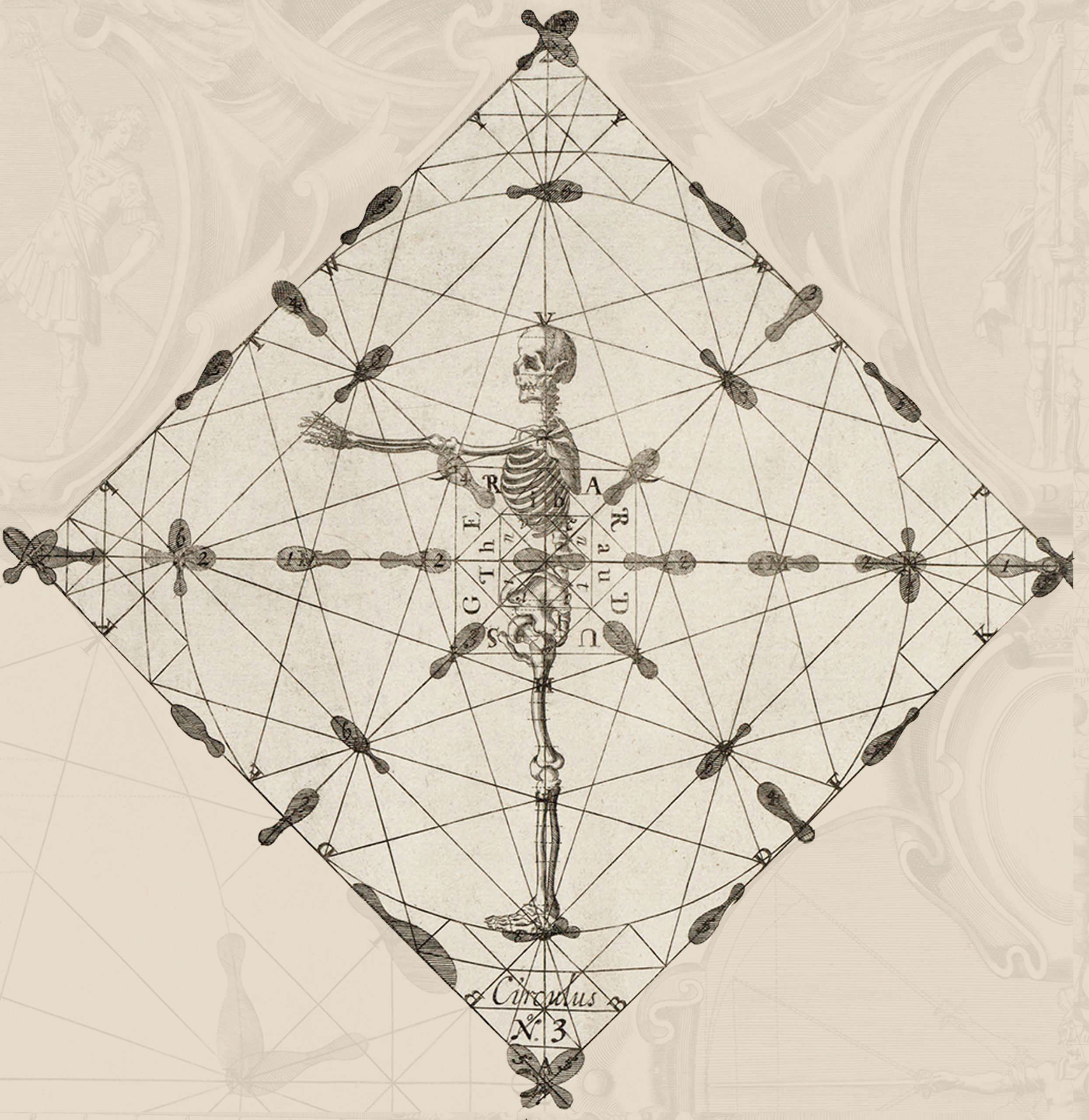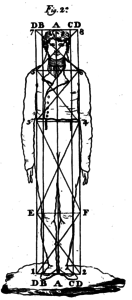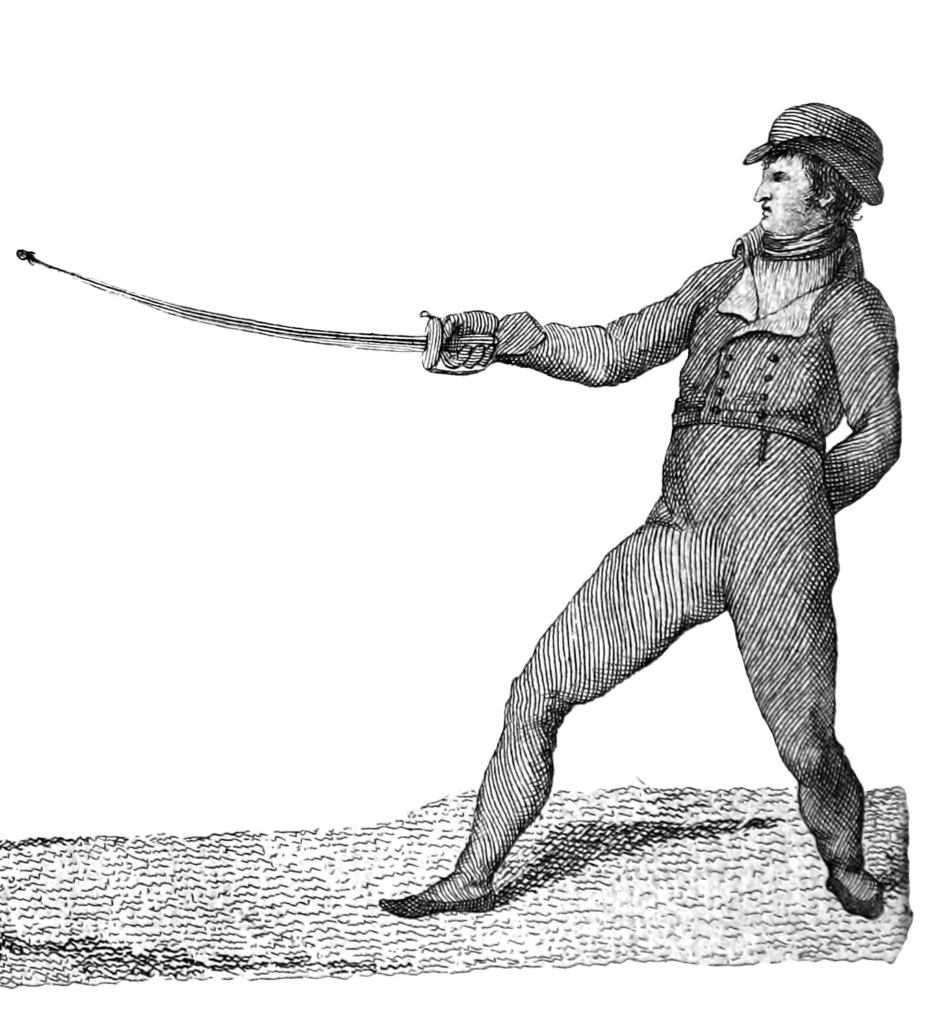Thrust of Fourth on the Common Guard
270. Position in distance, and guard the combatants as said in the first chapter of the second part. The one who took the offensive stance will observe whether their Sabre is on the inside or the outside. In the case where it is on the inside, turn your hand fully to fourth position, raise the guard to the height of the superior plane and, making a deep step, one foot from the line of the diameter on the left side, and profiling, direct the point of your sabre to the origin of the enemy’s right arm with opposition of the arm and sword, without disengaging the sabres, noting that all such operations must be so gathered that they cannot be distinguished in time from one another.
271. To remove this thrust it is necessary that, at the moment when the attacker turns their hand to fourth, you begin the journey of your displacement by uniting your elbow on your right vertical, balancing to the rear, and raising the point of your sabre to graduate and perfect the removal of low fourth. But, all of these operations have to be done with so much unity and promptness that they finish before the enemy completes his step since, losing this proportion or anticipation of time, the wound will be inevitable. So any practice of such an important exercise should not be regarded as excessive.
Thrust of Third on the Common Guard
272.If taking the guard and offensive stance, the sabre remains on the outside of the other, turn the hand fully to third position and raise the guard to the height of the superior plane. Make a deep step one foot away from the rear on the right side, and direct a thrust to the chest of your enemy with all of the oppositions stated in the previous shot, taking care that all of these operations are practiced as one time, such that there is no distinction noted between one and another. The removal of this thrust allows for variation with respect to the previous, that the graduation being, in this one, to the outside, it must conclude with the parry of low third, not omitting the balance to the rear, or turning the hand fully to third position. Substitute a quick removal of first withdrawing the left foot on the right diagonal.
Variation of the Common Guard
273. Although the guards explained are the safest, and therefore preferable to all, there are those who, through ignorance or contempt of the doctrines best tested, take certain ridiculous and unsafe postures. Those I do not think it necessary to enumerate, for their being unworthy of critique (for this, look to Rada, Pacheco, and the Encyclopedia Francesa Fencing Article). The least bad, and most frequent of these vulgar postures, is to be fixed already in the defensive stance, placing the guard at the height of the superior plane, extend the arm and turn the hand fully to the third position, leaving the point at the height of the middle plane, more or less, always directed at the opponent and opposing the right vertical.
It’s unclear if Frias is pointing us thinking of specific sections of Rada, and Pacheco or simply suggesting that reading them will give a better frame of reference on the topic. That said, the “Encyclopedia Francesa” being referenced is most likely a reference to Dennis Diderot and Jean le Rond d’Alembert’s ” Encyclopédie ou Dictionnaire raisonné des sciences, des arts et des métiers ….” which was known during Frias’ time and later as the Encyclopedia Francesa, or French Encyclopedia. The work does, in fact, include an article on fencing, or escrime which has been translated into English by the good folks at the “Encyclopedia of Diderot & d’Alembert Collaberative Translation Project” website, and can be found here. A transcription of the original French can be found here.
274. Whenever the opponent takes the common guard and the offensive stance that corresponds to the above mentioned position, either in the same stance or the defensive, lower the point of your sabre inside, to the height of the breast of your enemy, making opposition in it so that, with a very fast deep step, you leave the line one foot to the left side, executing safely, a thrust of first. But, if the point of your sabre is made to go down to the outside, leaving the line on the right side, without omitting any of the other circumstances, throw a thrust of second.*
*All of the thrusts explained in this chapter can be thrown without leaving the line, but the executions inside require the motion of profile and the others of the square. The same operation is necessary to remove them, that is to say that to remove inside, move profile, and square for the removals to the outside.
Thrust of Fourth on the Guard of Fourth
275. If after taking the distance, the contrary elects the defensive stance, both of you being in the common guard (assuming that the sabres are touching on the inside), take guard of fourth with your weapon, without leaving the offensive stance that you had to take in opposition of what your adversary chose. From this arrangement, leave the line one third to the left side, practice the thrust of fourth explained in paragraph number 270. With that, you will have inflicted the offense indicated in the title. The removal of this offense is demonstrated in paragraph number 271.
Thrust of Third on the Guard of Third
276. Just as in the previous shot, it was supposed that the sabres were touching on the inside in the common guard, so here, suppose that they are touching on the outside. In awareness of this, you will be able to more easily take the guard of third, and, from it, practice what is said in paragraph number 272. Execute a thrust of third on the guard of its name, which, for its defense, requires the operations explained in the same paragraph cited, treating on that removal.
Thrust of Second on the Guard of Fifth
277. If the contrary has asserted the common guard (after the election of distance) having left the guard at more or less the height of the superior plane, take the guard of fifth and leave the line to the right side, keeping the hand at the height of the supreme plane. Direct a thrust of second to the diameter of the chest without separating the swords. To remove this wound, gather the arm with great quickness in order to graduate the sabre and, from here, perfect the parry of second with movement to square and balance to the rear.
Thrust of First on the Guard of Sixth
278. Supposing that the opposite has asserted the common guard with his arm high, as said in the previous shot, take that of sixth and leave the line to the left side, keeping the guard to the height of the supreme plane, opposing with the arm and sword. Execute a thrust of first with the hand in third, to your contrary in the right vertical. But, if the guard of the opponent is not as high as that, leave the line to the right side, direct the point to the breast to the inside and execute the same thrust. This wound requires, for removal, a prompt graduation as with the previous, for it to go on to complete the parry of first.* However, for the last it will be safer to remove it with low fourth extending the arm.
*The thrusts of second and first by the sabre (on the guards) are removed comfortably and securely, the one with low fourth, and the other with third.
279. The thrusts by the sabre described on the four guards can be thrown even when the enemy has affirmed in any of them. Then, there is the appeal to transferring. In that case, it is the same as if he had not taken it and, for the attempt to offend it gives still greater disposition.

